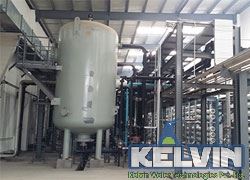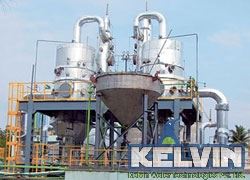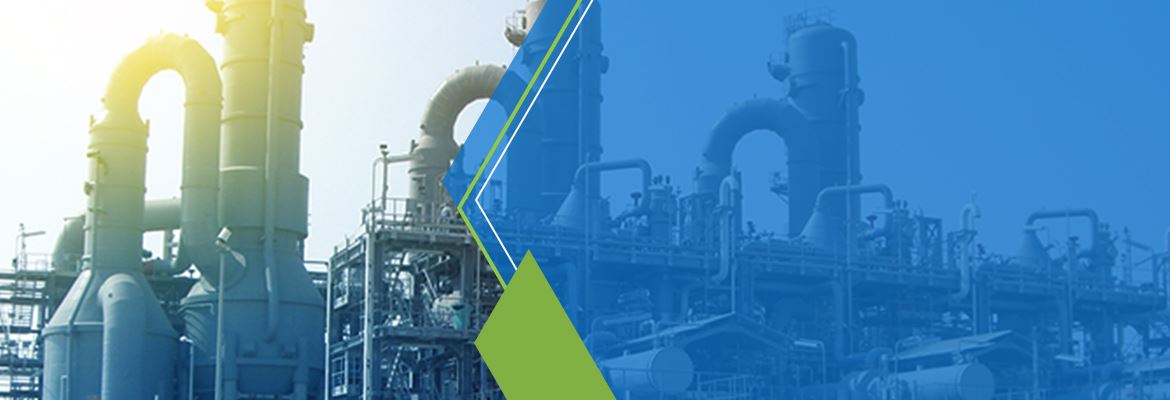Zero Liquid Discharge Plant
Atkins Enviro offers complete thermal and non-thermal ZLD solutions to manage tough-to-treat wastewaters. Atkins Enviro’S proprietary evaporators, brine concentrators, and crystallizers can help recover more than 95% of your wastewater while reducing the remaining brine as a product or solid. Atkins Enviro’S Sievers total organic carbon (TOC) analyzers help control the quality of water to be reclaimed or recycled in semiconductor operations.
Zero liquid discharge technologies help plants meet discharge and water reuse requirements, enabling your business to:
-
Meet stringent cooling tower blowdown and Flue Gas Desulfurization (FGD) discharge regulations.
-
Treat and recover valuable products from waste water sources.
-
Better manage thegenerated output water.
-
Control the water quality that is to be reclaimed or recycled.



What’s included in a basic ZLD treatment system?
The exact components of a ZLD treatment system will largely depend on the volume of dissolved material present in the waste, the system’s required flow rate what specific contaminants are present. But in general, a basic ZLD treatment system typically includes some type of:
-
clarifier and/or reactor to precipitate out metals, hardness, and silica
-
chemical feed to help facilitate the precipitation, flocculation, or coagulation of any metals and suspended solids
-
filter press to concentrate secondary solid waste after pre-treatment or alongside an evaporator
-
ultrafiltration (UF) to remove all the leftover trace amounts of suspended solids and prevent fouling, scaling, and/or corrosion down the line of treatment
-
reverse osmosis (RO) to remove the bulk of dissolved solids from the water stream in the primary phases of concentration
-
brine concentrators to further concentrate the reject RO stream or reject from electrodialysis to further reduce waste volume
-
evaporator for vaporizing access water in the final phases of waste concentration before crystallizer.
-
crystallizer to boil off any remaining liquid, leaving you with a dry, solid cake for disposal
Technologies
 Falling Film Brine Concentrators
Falling Film Brine Concentrators
 BForced Circulation Crystallizer
BForced Circulation Crystallizer
 Horizontal Spray Film Evaporator
Horizontal Spray Film Evaporator
 Hybrid Systems with Membrane Pre-Concentrators
Hybrid Systems with Membrane Pre-Concentrators
 Biological Treatment
Biological Treatment
 Solids Waste Handling
Solids Waste Handling
Waste Water Constituents
Careful consideration of waste water chemistry is needed for the successful design and operation of a zero liquid discharge system. A sound water chemistry design basis is key to successful zero liquid discharge design.
The chemical constituents of concern for a zero liquid discharge system typically are as follows:
ZLD Treatment Process Stages
Stage 1
Preliminary Treatment
Effluent Screening Process
Oil Removal Process
Effluent Mixing Process
pH Correction Process
Stage 2
Electrochemical Coagulation and Flocculation Process
Primary Sudge Settling, treatment process.
TSS, Colour & Associated BOD/COD Removal Process
Hardness & heavy metals removal process.
Stage 3
Biological Treatment Process
Secondary sludge settling process.
Sludge Treatment Process
BOD & COD removal process.
Stage 4
Depth Filtration/ Polishing Process
Polishing of TSS, SDI, Color, Turbidity, Virus etc.
Stage 5
TDS removal process.
Salt Crystallization process.
Benefits of ZLD Plant
Zero liquid discharge plant technology is growing globally as an important wastewater management strategy to reduce water pollution and extend water supply.
The main benefits of ZLD are:
Minimizes wastewater discharge.
Maximizes water recovery.
Create a valuable product for sale.
Removing environmental issues.
Reduction of dependence on local water sources and local legislation.
About ZLD
Zero Liquid Discharge (ZLD) is a water treatment process with a goal of recirculation of all of the possible water back to the process with zero liquid waste. The ultimate treatment process has zero or nearly zero adverse impact on the environment.
Pre-treatment - reducing TSS, COD, Turbidity to filter out particle impurities or precipitation of sparingly soluble compounds to allow additional treatment.
Concentration of dissolved solids - by membrane technologies, either by a combination of reverse osmosis (RO) with electrodialysis (EDR). The way of concentrating RO brine by EDR. Or single step electrodialysis. Using these technologies to concentrate the stream we can achieve more than 98 % of recovery.
Thermal treatment - the last step is usually consisting of Evaporator/Crystallizer to generate solids. Final evaporation of remaining water for re-use together with precipitation of solid waste for disposal in a controlled landfill or to be sold as a valuable product (pure NaCl Na2SO4 etc.)





 Web Mail : Info@atkinsindia.com
Web Mail : Info@atkinsindia.com Customer Care Number : +91 9992227788
Customer Care Number : +91 9992227788 Web Link : www.atkinsindia.com
Web Link : www.atkinsindia.com




